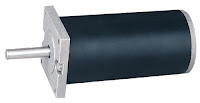by Austin Hughes
ISBN-10: 0750647183 | ISBN-13: 978-0750647182
This is a useful and interesting book which covers fairly all the topics in the field of motors and drives. The concepts are explained clearly and the mathematics is kept to a minimum. Topics start from the basics and and cover almost all aspects of the topic. The topics covered include dc motors, induction motors theory and types as well as stepper motors. Starting methods for various motors are also adequately addressed. The book also covers drives for dc and ac motors. It also includes a selection guide for drives. Though there pictures and diagrams, more pictures could have been added.
In all, a comprehensive book which covers all the important topics at a relatively low price. This book would be ideal for industry professionals as well as students of electrical engineering.










